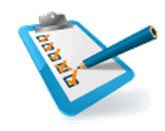
ECM: The budget crunch is upon all of us, and, as a result, we’re all looking at where the little efficiencies are to stretch our existing dollars as far as possible. With Laserfiche ECM there are many aspects to consider when making decisions.
Repositories and licenses cost money. So does scanning. How can we best use our existing resources?
Change your repository settings!
Changing your repository options, specifically the ‘logout automatically’ option, will prevent your users from becoming license hogs. That person who logs in and then leaves for lunch will be logged off automatically, freeing up a license for another user.
In Hampton, we’ve adopted a 1:5 user license ratio for both FX and RX licenses. Due to the fact that licenses are concurrent, we believe that it’s reasonable to expect that any user, particularly retrieve or read-only users, will access enterprise content management, find what they need and then exit the system.
What kind of scanning devices do you have available?
While scanners are “the” option when it comes to high quantity document capture, almost all types of copy machines have scanning capability and can easily scan to e-mail. Ask your IT Department or manufacturer representative to set the image to either tiff or pdf and add all users to the email setting.
Even if all of your office staff are not enterprise content management users, being able to copy/scan to e-mail prevents the proliferation of paper, which could be another significant cost savings for you.
Do all of your users know, enterprise content management and understand how to use Laserfiche’s e-mail utility?
This again will decrease the proliferation of paper in your office and to your clients or the public.
Are you fully utilizing your LSAP?
Your time is valuable to your employer and we all pay for software support. When you have questions, contact your reseller and employ their assistance with answers and best practices. You don’t have to figure it out on your own.
What’s in ECM?
If Laserfiche has become the new dumping ground (in addition to your network, pc’s, and ancillary devices…) then your data – and your server – could use some basic management.
- Purge your data; set up your Records Management Edition if you have it – practice good records management!
- Check your folder structure.
- Manage your volumes.
- Use your Column Display wisely.
